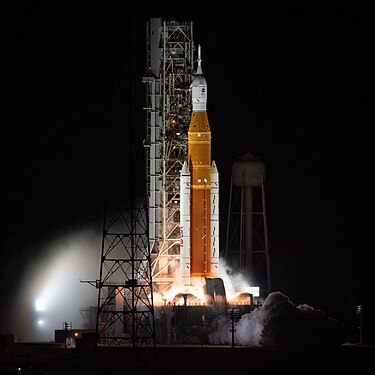Wikipedia:Main Page/Tomorrow
From tomorrow's featured article
Atrociraptor is a genus of dromaeosaurid dinosaur that lived during the Late Cretaceous in what is now Alberta, Canada. The first specimen was discovered in 1995 by the fossil collector Wayne Marshall in the Horseshoe Canyon Formation. In 2004, this became the holotype of the new genus and species Atrociraptor marshalli; the generic name is Latin for 'savage robber'. It is estimated to have measured 1.8 to 2 m (5.9 to 6.6 ft) in length and weighed 15 kg (33 lb). It would have had a large sickle-claw on the second toe and pennaceous feathers. Atrociraptor has a deeper face and more strongly backwards-inclined teeth than its contemporary relatives. It is thought to have been specialised for attacking larger prey due to its deep snout. Studies suggest dromaeosaurids used their sickle-claws to restrain prey while dismembering them with the mouth. Atrociraptor dates from around 72.2 to 71.5 million years ago; it survived for more than 2 million years and across a wide geographic area. (Full article...)
Did you know ...
- ... that Rincón Chileno (pictured) was nicknamed the "second Chilean consulate" by the Chilean immigrant community in Los Angeles?
- ... that before selling chicken and pies, 5-foot-9-inch (1.75 m) Eddie Sheldrake broke UCLA's single-game scoring record in basketball?
- ... that a book known as the "Polish Pinocchio" was published a hundred years ago?
- ... that Sun Jianai co-founded one of China's first national universities in 1898?
- ... that in its 1962 election campaign, the Socialist Party of India demanded that twice-yearly inter-caste dining be made a mandatory criterion for government employment?
- ... that X's rules were changed when StoneToss sought help from Elon Musk after an anti-fascist group published materials claiming to have revealed their identity?
- ... that the cast of The Perfect Couple created a WhatsApp group to avoid filming a dance sequence to the theme song?
- ... that Negussie Roba was an Olympic sprinter who later became a top marathon coach?
- ... that ontologists disagree on whether green is real?
In the news (For today)
- Archbishop of Canterbury Justin Welby (pictured) announces his resignation as a result of the John Smyth abuse scandal in the Church of England.
- In Zhuhai, China, 35 people are killed in a vehicle-ramming attack.
- Alliance for Change, led by Navin Ramgoolam, wins the Mauritian general election.
- A suicide bombing by the Balochistan Liberation Army at the Quetta railway station, Pakistan, kills 32 people.
- The German ruling coalition collapses over disagreements on economic policies.
On the next day

- 534 – The second edition of the Code of Justinian, a codification of Roman law by Byzantine emperor Justinian I (pictured), was published.
- 1532 – Spanish conquest of Peru: Conquistador Francisco Pizarro orchestrated a surprise attack (depiction shown) in Cajamarca, capturing the Inca emperor, Atahualpa.
- 1914 – World War I: Austro-Hungarian forces launched an assault against Serbian defensive positions at the Kolubara river, beginning the Battle of Kolubara.
- 1944 – World War II: Operation Queen commenced with one of the heaviest Allied tactical bombings of the war, attacking German targets in the Rur valley.
- 1959 – The Sound of Music, a musical by Rodgers and Hammerstein based on The Story of the Trapp Family Singers, opened on Broadway at the Lunt-Fontanne Theatre.
- Eleanor Coade (d. 1821)
- Kalākaua (b. 1836)
- Panditrao Agashe (d. 1986)
- A. S. Byatt (d. 2023)
Tomorrow's featured picture

|
Artemis I was an uncrewed Moon-orbiting mission that was launched on November 16, 2022. It was the first major spaceflight of NASA's Artemis program and marked the agency's return to lunar exploration since the Apollo program after five decades. It was the first flight test of the Orion spacecraft and the Space Launch System (SLS) rocket and the mission's main objective was to test the Orion spacecraft in preparation for future Artemis missions. Artemis I was launched from Launch Complex 39B at the Kennedy Space Center. After reaching orbit, the upper stage separated and performed a trans-lunar injection before releasing Orion and ten CubeSat satellites. Orion completed one flyby of the Moon on November 21 and completed a second flyby on December 5. This picture shows Artemis I launching from Launch Complex 39B Photograph credit: NASA/Joel Kowsky
Recently featured:
|
Other areas of Wikipedia
- Community portal – The central hub for editors, with resources, links, tasks, and announcements.
- Village pump – Forum for discussions about Wikipedia itself, including policies and technical issues.
- Site news – Sources of news about Wikipedia and the broader Wikimedia movement.
- Teahouse – Ask basic questions about using or editing Wikipedia.
- Help desk – Ask questions about using or editing Wikipedia.
- Reference desk – Ask research questions about encyclopedic topics.
- Content portals – A unique way to navigate the encyclopedia.
Wikipedia's sister projects
Wikipedia is written by volunteer editors and hosted by the Wikimedia Foundation, a non-profit organization that also hosts a range of other volunteer projects:
-
Commons
Free media repository -
MediaWiki
Wiki software development -
Meta-Wiki
Wikimedia project coordination -
Wikibooks
Free textbooks and manuals -
Wikidata
Free knowledge base -
Wikinews
Free-content news -
Wikiquote
Collection of quotations -
Wikisource
Free-content library -
Wikispecies
Directory of species -
Wikiversity
Free learning tools -
Wikivoyage
Free travel guide -
Wiktionary
Dictionary and thesaurus
Wikipedia languages
This Wikipedia is written in English. Many other Wikipedias are available; some of the largest are listed below.
-
1,000,000+ articles
-
250,000+ articles
-
50,000+ articles



